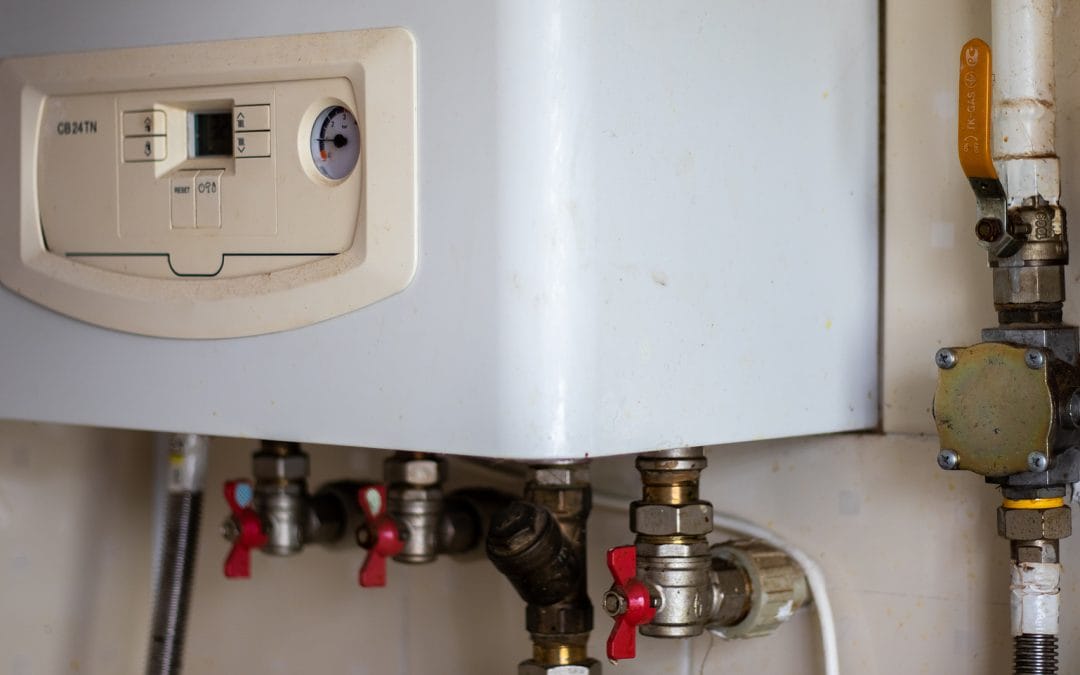Boilers are long-lasting, hard-wearing and as long as they are inspected annually will provide over a decade of service before they start to noticeably and regularly break down, necessitating regular repairs.
Outside of annual inspections by gas safe engineers, there are a number of telltale warning signs to be concerned about, as they often signify a potential issue with your boiler.
Whilst the most common signs that lead to a callout include unusual kettle-like banging noises and the foul smell of mercaptan, sometimes an unusual stain on or around your boiler can be a sign of a potentially significant issue.
Here are some of the most common boiler stains, what they mean and what you should do about them.
Black Marks Or Stains
Black marks are often a cause for concern, but if you notice them near or above your boiler, it could be a sign of a potentially dangerous fault with your boiler flue.
The boiler flue fitted to all modern boilers channels carbon monoxide and other dangerous gases safely out of the building where they can cause no further harm.
Unfortunately, black stains near your boiler, particularly on the ceiling directly above it, suggests that there might be an issue with your flue causing a boiler leak, meaning that dangerous carbon monoxide fumes are seeping inside the house.
Without sufficient ventilation, it can potentially build and lead to potential carbon monoxide poisoning, making it a serious risk to continue using a boiler which is potentially leaking fumes.
Open any windows or doors near to the boiler, shut off the boiler and get in touch with a gas safe engineer for an emergency callout.
Do not attempt to fix it yourself or unblock it, and if you feel dizzy or think that the flue has been faulty for a while, contact NHS 111 and seek further medical assistance.
Brown Or Yellow Streaks
Brown or yellow stains can sometimes be caused by carbon monoxide leaking, but in other cases it can be a symptom of corrosion or rust in parts of the casing or pipework.
Whilst rust on any component is typically not ideal, rust around boiler components can not only cause potentially dangerous faults to a boiler but can also be a symptom of existing water leakage or ingress that could potentially be a cause for serious concern.
Rust is typically a telltale sign of an ageing boiler that may need to be replaced, but in some cases, it can be a sign of a defective component, particularly if found on a relatively modern boiler.
Rust stains can be caused by a wide range of external issues, from a broken expansion valve, acidic water, too much sediment seeping into the boiler tank or another defective component.
Corrosion not only weakens metal, but it can cause boilers to overheat as rust often acts as a natural insulator.
Thankfully, if spotted quickly enough by an expert engineer, it can be fixed and the affected components can be replaced without too much hassle. However, given that rust can also be a sign of carbon monoxide leaks, rust should be reported sooner rather than later.
Dark Damp Spots
Water stains, mist and condensation around your boiler can be a sign of a range of issues with your boiler. Some of these are relatively easy to fix, some require an expert engineer to repair them, whilst others still can be a sign of more immediate danger.
Boiler leaks that seep into the wall and cause pronounced stains can be caused by pressure issues, with both low pressure and overly high pressure leading to water dripping out.
Occasional drips pouring out of the outlet pipe are normal, but a large amount is sometimes a sign of pressure issues inside the tank.
Low-pressure issues can often be fixed using the boiler’s filling loop, but if you regularly need to do this it could be a sign that there is a more substantial leak elsewhere in your pipework, something an engineer can help to find.
Outside of this, leaks can be caused by damage to the heat exchanger system, which can also cause boilers to stop dispensing hot water entirely depending on the nature of the damage.
It can also be caused by issues with joint seals in the pipes of your heating system, or by fatigue cracks due to age or corrosion.
Damp is a serious issue that can progress into more substantial structural damage if left unaddressed, so contacting a boiler engineer is an important first step towards fixing it.

